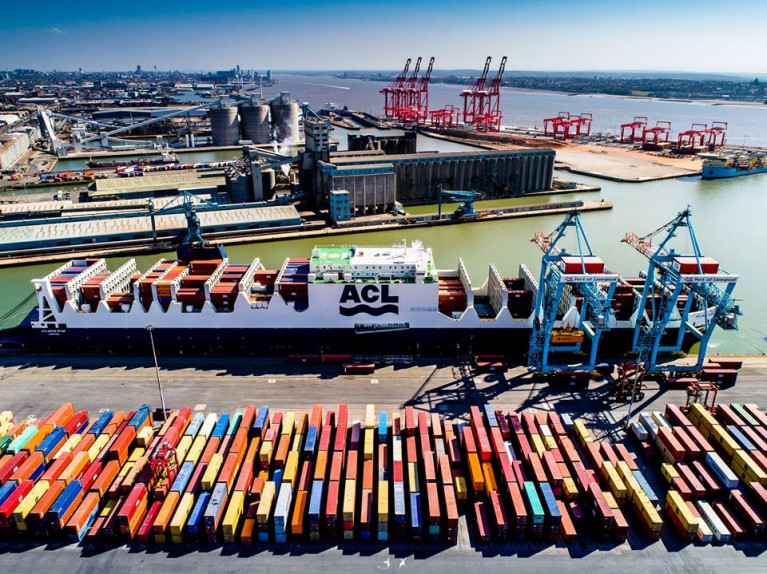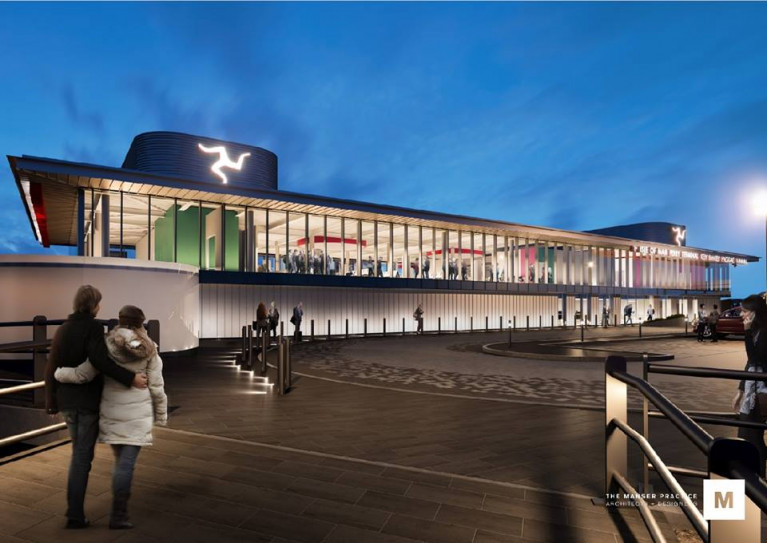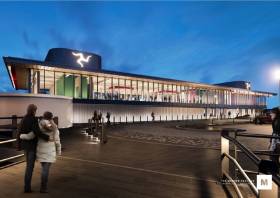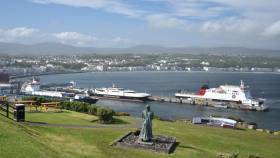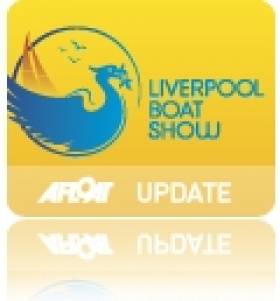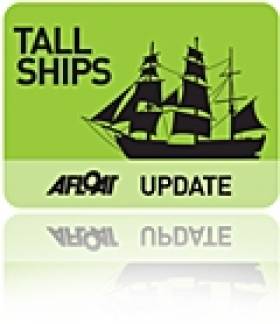Displaying items by tag: Liverpool
Peel Ports Group Invests in New Ship to Shore Container Gantry Cranes for Port of Liverpool
Peel Ports Group in the UK has invested in two new ship-to-shore (STS) container cranes for the Port of Liverpool (Terminal 1), which were built by Liebherr Container Cranes Limited and likewise for the Port of Cork's new pair of STS cranes as Afloat reported today.
The investment at the Merseyside port of new infrastructure is to further support growth from Intra European Feeder networks (including Afloat's adds BG Freight Line) and specialist carrier Atlantic Container Line (ACL).
A significant investment for the company, the new container gantry cranes will increase the number of (STS) cranes at the terminal and overall berth productivity still further whilst increasing height and reach capabilities of the terminal.
The new design utilises high tensile steel and a lattice boom and beam construction, designed and built by Liehberr, resulting in a lighter crane with reduced wheel loads, a key consideration due to the narrow span and quay structure at the Port of Liverpool’s Terminal 1.
David Huck, Managing Director at Peel Ports said: Our investment in the very latest 'Panamax' container cranes at Terminal 1 demonstrates our long term commitment to investing in our customers and further compliments our Irish Sea hub proposition connecting the world to Liverpool and by far the largest consuming and exporting region of the UK.
The new cranes will significantly enhance the Port of Liverpool’s capabilities for ACL, as well as other current and future users of Terminal 1. For us, innovation and improvement are at the heart of our Port-centric solutions, and we’re excited to get the new cranes in place and commissioned for the start of 2022.
ACL is the Port of Liverpool’s longest-serving container carrier and, in 2019, signed a 15-year contract extension agreement with Peel Ports for container and roll-on / roll-off (RoRo) operations. The agreement is valid until 2035 and signifies ACL’s confidence in the growing volume of transatlantic trade between the UK and North America. (See Afloat's coverage dating from 2016 featuring Atlantic Star, leadship of ACL's 4th generation (G4) con-ro ships).
Andrew Abbott, CEO at ACL said: “Liverpool has been Atlantic Container Line’s home port in the UK for 54 years. The port has seen four generations of ships make calls twice a week as technology changed and transatlantic cargo volumes grew. ACL’s current generation of Container/RoRo vessel is twice as large as its predecessor, but uses the same footprint in order to fit through the lock at Royal Seaforth.
“To carry all the extra cargo, the new ships are considerably higher, so high, state-of-the-art gantry cranes are essential in order to productively handle them. Peel Ports answered the challenge with brand-new hardware, enabling them to handle the new ACL vessels more quicky and more efficiently than ever before.
“We congratulate Peel Ports for this fantastic accomplishment. ACL looks forward with confidence to a bright future at the Port of Liverpool.”
Isle of Man Infrastructure Minister has provided a recent update on the new ferry terminal in Liverpool.
Tim Baker the Infrastructure Minister told the House of Keys that covid has added five million pounds to the bill for the new terminal.
On top of that it expected there will be an extra five percent added for other reasons.
Unexploded world war two bombs have had to be dealt with and the strain on the seawalls created by the powerful bow thrusters of the newbuild Manxman ferry.
ManxRadio reported the story and of a podcast of what Mr Baker told the Keys.
Liverpool's New Ferry Terminal Delayed
A completion date for the new £38m Liverpool landing stage for Isle of Man ferries has been delayed.
According to IOMToday, it will be in the summer, as the completion date for the ferry terminal was given as February 2021, but that has been put back to July of that year.
However, Infrastructure Minister Ray Harmer said he was hoping it would be ready for the TT, which gets under way at the end of May.
The delay was due to the discharge of planning conditions and some legal agreements taking ’longer than anticipated’, he said.
It was also revealed that dredging is required for the project which Afloat adds will see the Isle of Man Steam Packet use the new terminal.
For more on this development click here.
Isle of Man Questions Stack-Up at Steam Packet
#FerryNews - It may be the summer recess at the Tynwald, the Isle of Man's parliament, but questions are still being asked about the Steam Packet.
As IOMToday reports there are 12 separate questions surrounding the ferry company (see acquired by Manx Government) out of the 57 questions for written answer from Tynwald members.
Members can ask written questions during the recess, with responses due yesterday, August 21.
Of the 12, 11 questions come from Liberal Vannin leader, Kate Beecroft (Douglas South) with the other from Rob Callister (Onchan), both asking questions relating to the proposed Princes Half-Tide Dock.
Mr Callister’s question, for the Minister for Infrastructure Ray Harmer, relates to whether the current contract between Peel Holdings and the Steam Packet relating to access to Pier Head can be extended beyond the end of 2019 and what facilities will be in place from January 1 2020.
For much more on the story, click here.
Liverpool’s Docks Exhibition Explores History of Merseyside's Maritime Past
This story of Liverpool’s docks will be told time in a brand new exhibition at the Merseyside Maritime Museum, called On the Waterfront, opening on Wednesday 25 November 2015.
Liverpool’s docks transformed the fortunes of the city. Their story is a 300–year journey that turned a small, regional port into one of the world’s great maritime centres.
Marking the 300th anniversary of the city’s Old Dock - the world’s first commercial wet dock– this exhibition covers the period from the 18th century up to the present day. Personal stories show how the waterfront has changed and the impact it has had on the city and the lives of local people.
In addition to stunning photographs of waterfront workers and buildings throughout Liverpool’s history, visitors will be able to see the first-known painting of Liverpool; the itinerary for Prince Albert’s visit to the city to christen the Albert Dock, and a register of vessels showing the first ship using the new Albert Dock in 1846, in addition to huge dock scales used to weigh cargo.
A section dedicated to the Three Graces will include reproductions of two newly donated Stewart Bale images of the Cunard building under construction, which have never been displayed before. They show the construction of the iconic Liverpool building during World War One and one of the photographs, dated 1913, is now the oldest image held by the Museum within its Stewart Bale collection.
The exhibition also recognises 21st-century changes to the waterfront including another National Museums Liverpool’s venue, the Museum of Liverpool. Opened in July 2011, this Museum revived the area as the bridge between the Albert Dock and the Pier Head, allowing people to walk the length of the city’s waterfront to take in not only the Museum of Liverpool but attractions including the Merseyside Maritime Museum, International Slavery Museum and Tate. The Museum of Liverpool has received more than 3.8 million visitors since first opening, and became England’s most visited museum outside of London in 2012.
Ian Murphy, Deputy Director, Merseyside Maritime Museum, said:
“The landscape of Liverpool’s maritime heritage is now a defining symbol of the city and forms part of its World Heritage Site. On the Waterfront is a record of the changing fortunes of the port, the city, and its people. It’s an important story and we are delighted to be able to tell it on the historic 300th anniversary year of the opening of Liverpool’s Old Dock, the world’s first commercial wet dock.
“Merseyside Maritime Museum itself was once a warehouse for high value goods like tea, silk, sugar and spirits in the Port of Liverpool’s Albert Dock - a powerhouse of industry. While Liverpool’s docks relocated downriver towards Seaforth, the building fell into disrepair as part of the wider decline and fall of the city’s traditional docks.
“But in 1986 the building reopened as the Merseyside Maritime Museum – the first public building to open at the dock -starting the renaissance of the waterfront, and becoming the venue we know today; one of the most visited museums in the region. This building is a perfect encapsulation of the story we are showing in the wider exhibition - the changing fortunes of the docks - and we are proud to be opening it here”.
Sue Grindrod chief executive of Albert Dock Liverpool added:
"The heritage of Albert Dock is rooted in its life as a thriving hub at the heart of the Port of Liverpool, almost 170 years of history is in the walls of these grade I listed buildings. The Dock remains today a thriving place to live, work and play at the centre of the developing Liverpool Waterfront and we welcome the addition of Waterfront 300 to share in the journey of this much loved Dock.”
Ian Pollitt, Development Investment Surveyor, Peel Holdings (Land and Property) Limited said:
“The city's docks are famous around the world and we look forward to seeing the new exhibition which I'm sure will be fascinating.
“Anyone who visits the city understands the key role the docks play in today's Liverpool. That role is set to grow in importance as we continue to make the most of the city's best asset: its waterfront”.
#liverpoolboatshow – The Northern Boat Show is a festival of boating at the heart of the International Mersey River Festival. This three-day boat show will showcase world class sailing boats, power boats and marine products and services, all set against the backdrop of the Albert Dock.
The latest sailing and power boats will be showcased in Albert Dock and there will be a land-based exhibition on the quayside next to Salthouse Dock. The land-based show will be free to all festival visitors and boat enthusiasts can purchase pontoon tickets to gain exclusive access to the boats on display in Albert Dock.
Location: Liverpool Waterfront, Liverpool L3 4BB. Open 10am to 5pm Fri 5th, Sat 6th & Sun 7th June.
#ISORA – The Offshore Racing Weekend, a higlhight of the 2014 ISORA calendar, started with a fast and furious 'midnight' race from Liverpool to Douglas with a fantastic spinnaker leg for the entire 75 mile voyage. Results are available to download below. The first boat in was Jackknife who finished approximately 0200hrs on Saturday morning followed rapidly by the rest of the fleet and the last boat finishing approximately 0630hrs.
Bada Bing (Andy Napper, Andy and Annie Farrell) were overall winners again this year. Baba Bing, a Humphreys 30, was previously known as Men Behaving Badly, and subsequently Hot Rats and was built at Firmhelm in Pwllheli.
#isora – ISORA sailors are in bullish form after a strong turnout last night for the 97th race from Liverpool to Douglas in the Isle of Man. Organisers of the Offshore Racing Weekend are hoping hoping that the 25–boat fleet for the first race to Douglas will increase for the Douglas to Dún Laoghaire race tomorrow, Sunday.
The 75–mile race started last night at 18.30 and is sailed under the burgees of Tranmere Sailing Club and Liverpool Yacht Club.
The second offshore race starts on Sunday morning at 0900hrs from Douglas to Dun Lagohaire, a distance of approximately 80 miles.
The offshore weekend is a new Irish Sea initiative bringing together boats from across Northern Ireland, the Isle of Man, England, Wales and Ireland. The venture has won the support of Hudson Wight who are providing prizes for the weekend offshore series.
This race is also a feeder race for the ICRA championships in Dun Lagohaire next weekend.
There were no serious injuries when more than 30 passengers were plunged into the water in Albert Dock in Liverpool after the Yellow Duckmarine's "splashdown" landing - where it drives down a ramp into the water - went wrong.
LIverpool's North West Ambulance service confirmed all passengers were evacuated safely after the incident at around 4pm yesterday afternoon.
Large crowds gathered around the scene, while several police and ambulance response vehicles rushed to help with the rescue operation led by the fire service.
The passengers were moved onto a pontoon as the boat began slowly sinking.
Amateur video (as above) from the scene purportedly shows passengers in life jackets swimming away from the yellow boat to the shore.
Passers-by can be seen throwing life rings to the passengers in the water.
The submerged yellow vessel can just be seen in the video behind a narrow boat.
This video has no audio Sources: PA
Historic Coal Ship Could Be Sold To Asia
#TallShips - A tall ship that once plied the route between Bristol and Youghal may be sold to Asia unless funding can be secured to keep it at its current home in Liverpool.
The Daily Mail reports on the 113-year-old schooner Kathleen and May, which has been berthed since 2010 at Liverpool's Hartley Quay where it is cared for by a team of 60 volunteers with support from the UK's Arts Council.
Previously she made heritage visits to Dublin in 2008 and 2009 carrying a cargo of French wine, the first commercial voyages for the vessel since the 1960s.
The ship is the last traditional (West Country) wooden topsail schooner and was built at Deeside. She is also listed on the National Historic Ships Register.
Kathleen and May is priced at £2 million (€2.36 million) and has been on the market since last year.
Now an offer for the former coal ship has come in from a Far East Asian buyer - and concerns are growing that she could leave the British Isles for a new life half-way round the world.
The Daily Mail has more on the story HERE.



























